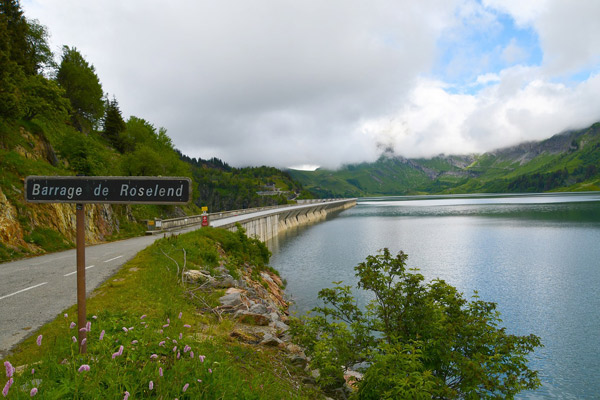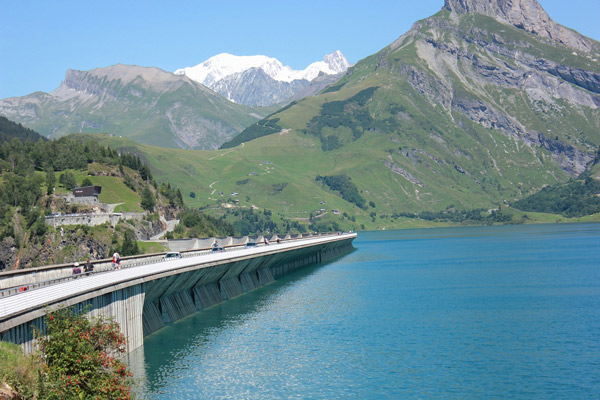Located in the heart of the Alps, not far from Mont-Blanc, the Roselend dam is located on the territory of the municipality of Arêches-Beaufort. It is one of the most impressive and emblematic hydraulic structures in the region and also the 4th highest dam in France. Today, the Roselend dam is an emblematic place in the region and attracts thousands of visitors each year. Its history is a testimony to the economic and energy development of the region, as well as the environmental issues associated with it.
History of the Roselend Dam
Nestled in the sumptuous French Alps, more precisely in the Beaufortain valley, the history of the Roselend dam dates back to the 1950s, to meet the demand for electricity in the region. In addition to energy production, the construction of the Roselend Dam also met other needs. It was planned to regulate the flow of the river, to store water for irrigation of the surrounding agricultural lands and to meet the drinking water needs of the region. Thus, the dam was designed to serve both as a major hydraulic work and a means of local economic development. Construction work began in 1955 and its impoundment in 1960 led to the engulfment of the hamlet of Roselend and more than 50 mountain pastures. The work was then completed in 1962. Measuring 800 m long and 150 m high, it can hold up to 185 million m³ of water. Associated with the Gittaz and Saint-Guérin dams and the Bâthie power station, they make up the vast Beaufortain hydroelectric complex.

Operation and role of the dam
The Roselend dam is a hydroelectric structure that has a dual function: to produce electrical energy and to regulate the flow of the Doron de Beaufort river. The dam's power plant is equipped with two Francis turbines which generate approximately 550 GWh of electricity per year. This energy is used to power homes, businesses and infrastructure in the region. In addition to its electricity production function, the Roselend dam also plays an important role in regulating the flow of the Doron de Beaufort river. Indeed, the dam makes it possible to store water upstream and to release it in a controlled manner downstream. This regulation helps to prevent flooding and to guarantee a minimum flow throughout the year for agricultural and industrial uses. The Roselend dam is also an important economic player for the region. Electricity generation generates revenue for local authorities and contributes to the economic development of the region. The dam is also a popular tourist spot that attracts visitors to experience its natural beauty and hydroelectric function. However, the Roselend Dam also has significant environmental impacts. The water reservoir has modified the landscape and the local fauna, with the disappearance of certain animal and plant species. To limit these impacts, measures have been put in place to preserve biodiversity and restore the impacted ecosystems.

Visit of the surroundings of the Roselend dam
The Roselend dam is reputed to be the most "aesthetic" of the Savoy dams and is a magnificent site for fishing and hiking. Indeed, the Roselend Dam is a popular tourist spot that attracts visitors who come to experience its natural beauty and hydroelectric function. Given the altitude of the site, the dam road closes with the arrival of the first snow and until the snow melts. It is therefore possible to access the Roselend dam with certainty every day from May 15 to October 15. Especially since the surroundings of the dam offer many possibilities for hiking for all levels. The hiking trails allow you to discover the mountain landscapes, the local fauna and flora, as well as the history and construction of the dam. It is in itself a very beautiful work of civil engineering because its water retention creates a magnificent lake of a very pure and very aesthetic blue, thus offering a postcard landscape. In addition, being located at altitude, it offers a very beautiful view of the surrounding peaks and of Mont Blanc.


